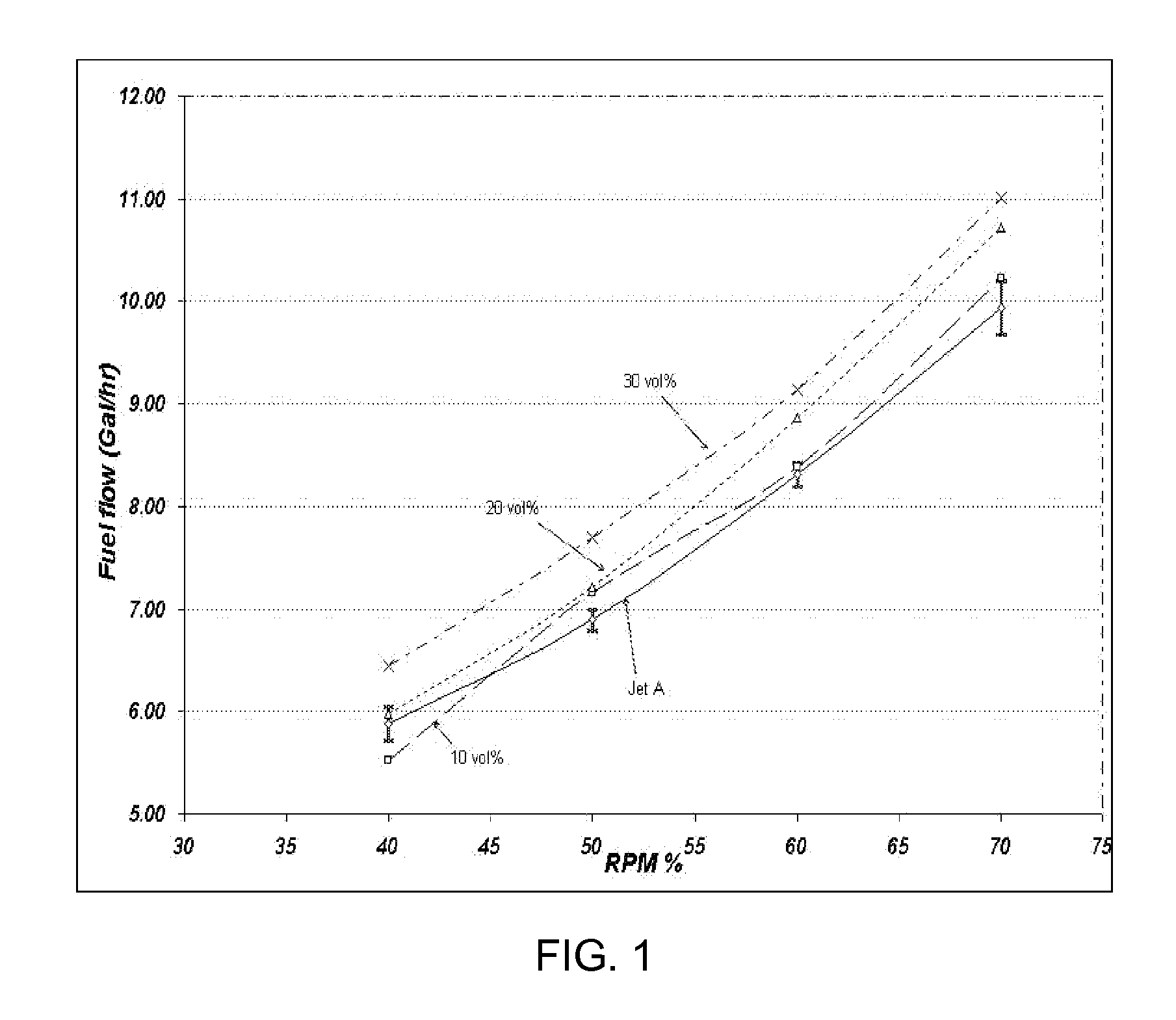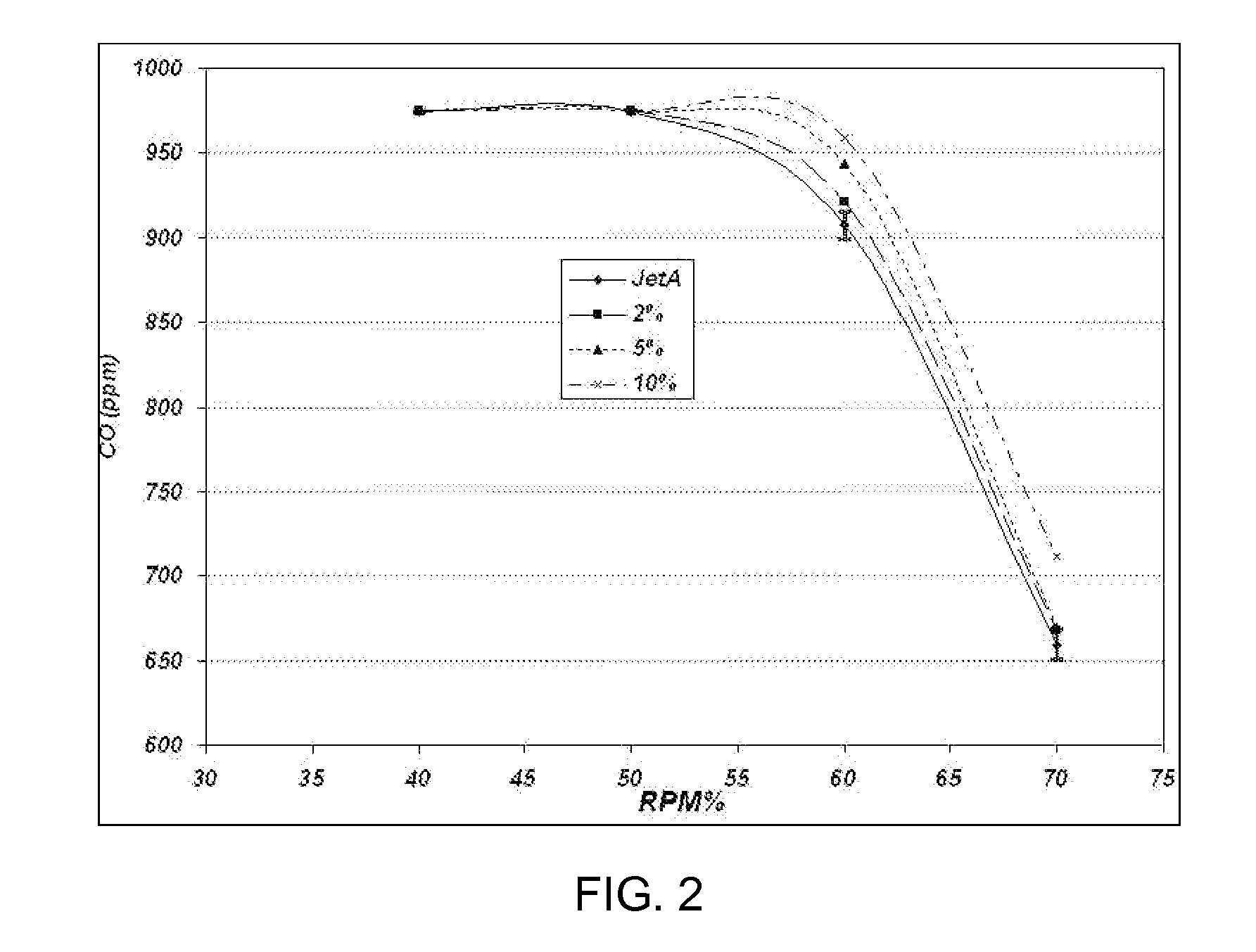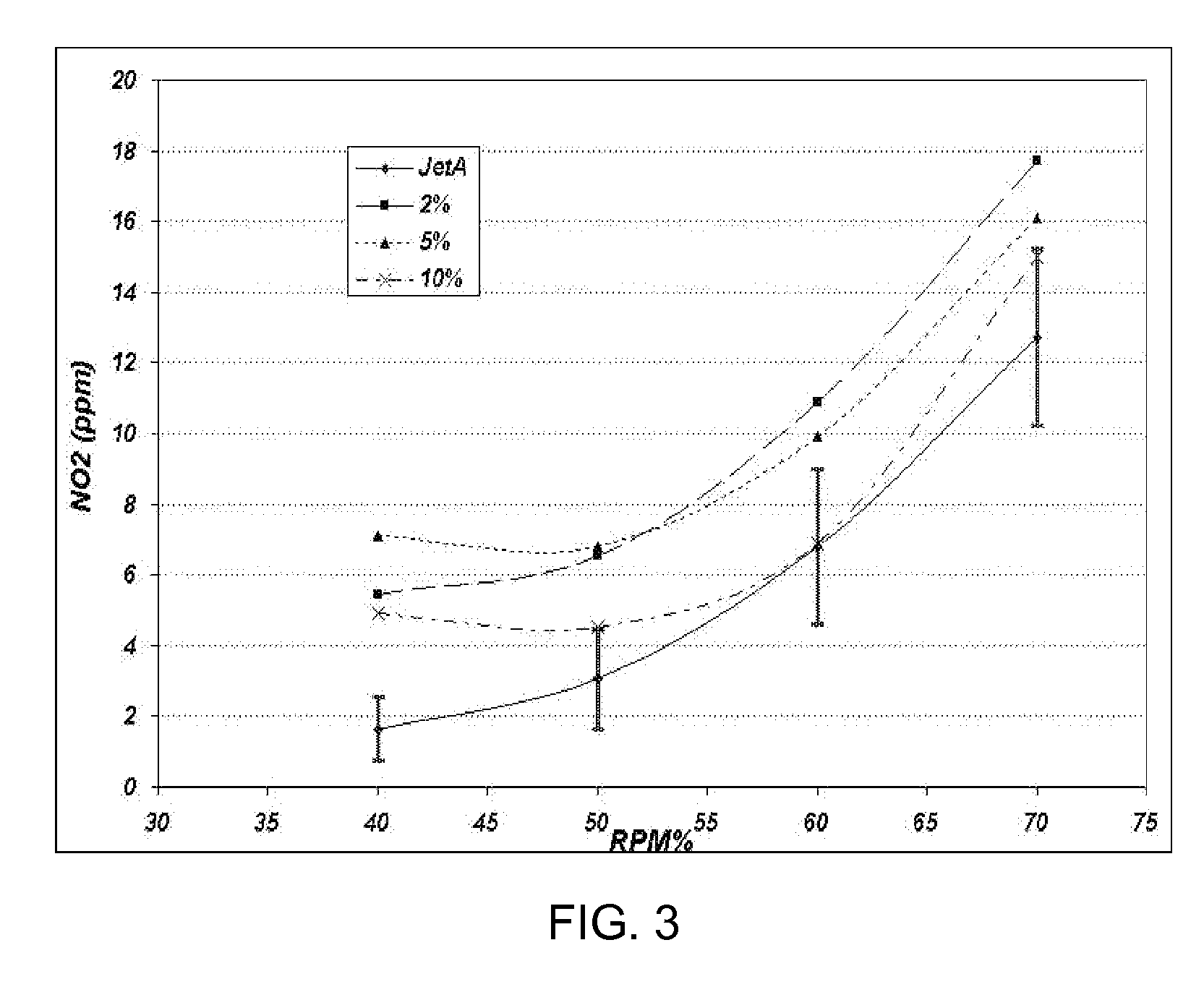Method for Preparation, Use and Separation of Fatty Acid Esters
- Summary
- Abstract
- Description
- Claims
- Application Information
AI Technical Summary
Benefits of technology
Problems solved by technology
Method used
Image
Examples
example 1
[0063] Soy methyl ester prepared as described is analyzed for composition. The starting soy methyl ester had the composition and properties according to Table 2:
TABLE 2Percentage by weightFatty Acid Methyl EstercompositionMethyl Palmitate (C16:0)9.15Methyl Stearate (C18:0)3.78Methyl Oleate (C18:1)23.52Methyl Linoleate (C18:2)55.25Methyl Linolenate (C18:3)7.64Others0.66Total Saturates12.93Cloud Point: (C. °)0
[0064] 24.057 g of soy methyl ester and 10.077 g of urea were added to 160 mL of ethanol and the mixture was heated to 67 C.°, with constant stirring. A homogenous mixture was obtained with all the urea dissolving at this temperature. The mixture was then cooled at a rate of 1.19 C.° / min to a final temperature of 20 C.°. The urea inclusion compounds (clathrates) formed were separated by filtration. The filtrate was then heated to 30 C.° and 70% of the starting volume of ethanol was recovered via evaporation under vacuum. The remaining filtrate was twice washed with equal volume...
example 2
[0065] 24.053 g of soy methyl ester having the composition according to Table 2 and 18.045 g of urea were added to 160 mL of ethanol and the mixture was heated to 73 C.°, with constant stirring. A homogenous mixture was obtained with all the urea dissolving at this temperature. The mixture was then cooled at a rate of 1.19 C.° / min to a final temperature of 20 C.°. The urea inclusion compounds formed were then separated by filtration. The filtrate was then heated to 30 C.° and 52% of the starting volume of ethanol was recovered via evaporation under vacuum. The filtrate was twice washed with equal volume of water (60 C.°, pH 3). 15.97 g of fractionated soy methyl ester (66.39% by wt of the starting soy methyl ester) was recovered with the composition and properties according to Table 4.
TABLE 4Percentage by weightFatty Acid Methyl EstercompositionMethyl Palmitate (C16:0)1.55Methyl Stearate (C18:0)0.00Methyl Oleate (C18:1)21.92Methyl Linoleate (C18:2)69.47Methyl Linolenate (C18:3)7.0...
example 3
[0066] 24.056 g of soy methyl ester having the composition according to Table 2 and 16.041 g of urea were added to 160 mL of ethanol and the mixture was heated to 72 C.°, with constant stirring. A homogenous mixture was obtained with all the urea dissolving at this temperature. The mixture was then cooled at a rate of 1.32 C.° / min to a final temperature of 30 C.°. The urea inclusions compounds formed were then separated by filtration. The filtrate was then heated to 30 C.° and 63% of the starting volume of ethanol was recovered via evaporation under vacuum. The filtrate was twice washed with equal volume of water (60 C.°, pH 3). 18.25 g of fractionated soy methyl ester (75.86% by wt of the starting soy methyl ester) was recovered with the composition and properties according to Table 5.
TABLE 5Percentage by weightFatty Acid Methyl EstercompositionMethyl Palmitate (C16:0)2.25Methyl Stearate (C18:0)0.00Methyl Oleate (C18:1)22.45Methyl Linoleate (C18:2)68.53Methyl Linolenate (C18:3)6....
PUM
| Property | Measurement | Unit |
|---|---|---|
| Temperature | aaaaa | aaaaa |
| Temperature | aaaaa | aaaaa |
| Percent by mass | aaaaa | aaaaa |
Abstract
Description
Claims
Application Information
 Login to View More
Login to View More - R&D
- Intellectual Property
- Life Sciences
- Materials
- Tech Scout
- Unparalleled Data Quality
- Higher Quality Content
- 60% Fewer Hallucinations
Browse by: Latest US Patents, China's latest patents, Technical Efficacy Thesaurus, Application Domain, Technology Topic, Popular Technical Reports.
© 2025 PatSnap. All rights reserved.Legal|Privacy policy|Modern Slavery Act Transparency Statement|Sitemap|About US| Contact US: help@patsnap.com



